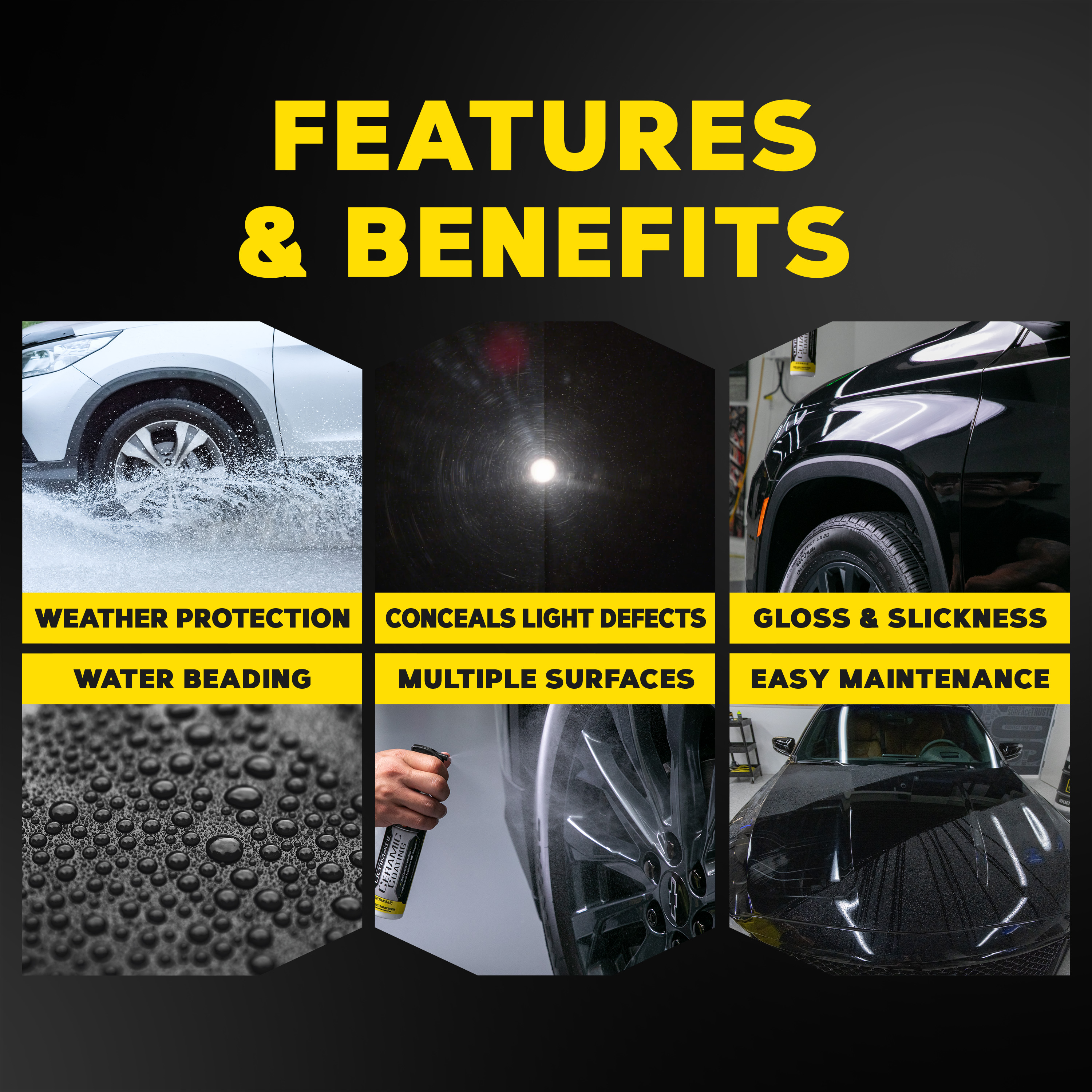Why Ceramic Finish Is the Ultimate Service for a Remarkable Finish
Ceramic coating has actually arised as a leading service for those seeking a flawless surface for their vehicles, thanks to its exceptional sturdiness and safety functions. What factors genuinely set ceramic coating apart?
What Is Ceramic Layer?

When applied properly, ceramic coating creates a hydrophobic surface area that fends off water and dirt, making it much easier to preserve and clean up. Unlike traditional waxes or sealants, which normally offer short-lived protection, ceramic layers can last for several years, depending upon the product top quality and application approach. The process of applying ceramic covering needs meticulous preparation, consisting of complete cleaning and sometimes repaint modification, to guarantee optimum bonding and effectiveness.
Ceramic layers are not restricted to auto surface areas; they can additionally be made use of on different products, consisting of glass, metal, and plastics, giving a versatile remedy for boosting security. Overall, ceramic layer represents a considerable advancement in surface protection innovation, incorporating both functional and visual advantages for a large range of applications.
Benefits of Ceramic Covering
While lots of surface protection options exist, the benefits of ceramic layer stand apart due to its one-of-a-kind residential properties and resilient performance. One of the primary advantages is its phenomenal sturdiness. Ceramic Coating Philadelphia. Unlike typical wax or sealers that call for frequent reapplication, ceramic coatings give a resistant layer that can last for numerous years, considerably minimizing maintenance efforts
An additional remarkable advantage is improved security versus environmental impurities. Ceramic coverings produce a hydrophobic surface area that pushes back water, dirt, and various toxins, making it much easier to clean up. This attribute not only preserves the lorry's look but likewise reduces the threat of deterioration and oxidation, especially in extreme weather conditions.
Moreover, ceramic finishings use remarkable resistance to UV rays, stopping fading and degradation of paint over time. This UV security is vital for keeping the visual value of cars and surface areas revealed to route sunshine.
Additionally, the glossy coating accomplished with ceramic layer boosts the overall visual allure, offering surfaces a showroom-quality sparkle. In general, ceramic coatings stand for a substantial development in surface protection innovation, providing long-lasting advantages that satisfy both functional and visual needs.
Exactly How It Functions
Comprehending the scientific research behind ceramic coverings discloses exactly how they offer such impressive protection and long life. At its core, a ceramic finish is a liquid polymer that chemically bonds with the lorry's factory paint.
The application procedure includes numerous steps, including surface area prep work, which is important to accomplishing optimal attachment. As soon as applied, the finishing undertakes a healing procedure, during which it sets and creates a semi-permanent bond with the paint surface. This bond is what identifies ceramic layers from conventional waxes and sealers, giving a longer-lasting safety obstacle that can withstand for many years.
Moreover, the density of the covering can boost its protective qualities, making certain that it can stand up to harsh conditions. Inevitably, the scientific research of ceramic coatings combines sophisticated materials with cutting-edge application techniques to provide an unparalleled level of defense and aesthetic enhancement for lorries.
Contrast With Conventional Methods
When contrasted to typical paint protection approaches such as waxes and sealants,The benefits of ceramic layers come to be especially noticeable. While waxes supply a short-term sparkle, usually lasting a few weeks to a number of months, ceramic coatings supply a durable safety layer that can endure for numerous years. This resilience dramatically reduces the regularity of reapplication, making ceramic finishes an extra cost-efficient remedy over time.
In addition, conventional methods often need extensive prep work and several applications to achieve a satisfying level of security. On the other hand, ceramic layers bond at a molecular degree with the automobile's surface area, developing a durable guard versus environmental impurities like UV rays, acid rain, and roadway salts. This bond boosts the car's resistance to scratches and swirl marks, which are prevalent with typical waxes and sealants.
In addition, the hydrophobic homes of ceramic coverings fend off water and dirt, resulting in simpler cleaning and maintenance. In contrast, wax and sealant-treated surfaces can attract gunk, necessitating even more frequent cleaning - Ceramic Coating Philadelphia. On the whole, ceramic finishes not only provide premium protection yet also provide an here are the findings extra long-lasting and visually appealing surface, developing them as the favored option for discerning vehicle proprietors
Application and Maintenance Tips

Making use of a foam applicator, use the covering in little areas, complying with the manufacturer's standards pertaining to density and overlap. Enable enough healing time in between coats, normally look at these guys 24 hr, to make sure proper bonding. After application, it is vital to avoid direct exposure to water or severe components for a minimum of a week to permit the covering to completely heal.
For upkeep, clean the automobile on a regular basis with pH-balanced soaps and stay clear of unpleasant products. Touchless cars and truck washes are advised to lessen scratching. Additionally, utilizing a ceramic upkeep spray can improve the layer's hydrophobic homes and durability. Normal evaluations for any kind of indications of wear will help keep the coating's integrity and preserve that excellent surface.
Conclusion
In verdict, ceramic finishing becomes a superior alternative for attaining a perfect automobile finish. Its exceptional longevity, safety top qualities, and hydrophobic buildings substantially improve the vehicle's appearance while simplifying maintenance initiatives. By developing a robust bond with factory paint, ceramic finishing properly shields versus scrapes, UV rays, and ecological pollutants. With a lifespan expanding a number of years, this advanced option not only preserves yet likewise elevates the general visual charm of lorries, making it a cost-efficient investment useful source for vehicle enthusiasts.
